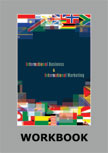Wind Energy Industry in the US and Canada: A Note on the Regulatory Environment |
ICMR HOME | Case Studies Collection
»
Business Environment Case Studies Please note: This case study was compiled from published sources, and is intended to be used as a basis for class discussion. It is not intended to illustrate either effective or ineffective handling of a management situation. Nor is it a primary information source. |
||||||||||
|
"Thanks to the Congress's extending the wind energy production credit before it expired for the first time in the credit's history, the wind industry is looking forward to several record-breaking years in a row."1 – Randall Swisher, Executive Director, American Wind Energy Association, in February 2006. "2005 will be remembered as the start of Canada's wind energy boom as more than 3,000 MW of wind energy projects are now contracted and slated for construction in Canada over the next few years. In fact, federal and provincial governments both put in place policies in 2005 that could facilitate the installation of a minimum of 8,000 MW of wind energy in Canada by 2015. This would make wind energy responsible for 16% of all electricity to be produced by new generating facilities to be constructed in Canada over the next decade."2 – Robert Hornung, President of the Canadian Wind Energy Association, in February 2006. Introduction
Further, oil prices in the international market are highly volatile and cause a major capital drain for the US and Canada.
Wind Energy Industry in the US and Canada: A Note on the Regulatory Environment - Next Page>>
1] "Record Year for Wind Energy: Global Wind Power
Market Increased by 40.5% in 2005,"www.gwec.net, February 17, 2006. |
Case Studies Links:-
Case Studies,
Short Case Studies,
Simplified Case Studies.
Other Case Studies:-
Multimedia Case Studies,
Cases in Other Languages.
Business Reports Link:-
Business Reports.
Books:-
Textbooks,
Work Books,
Case Study Volumes.



